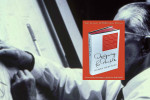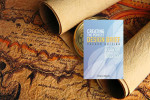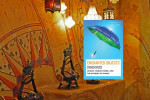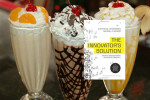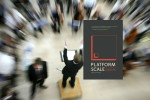Designing for People
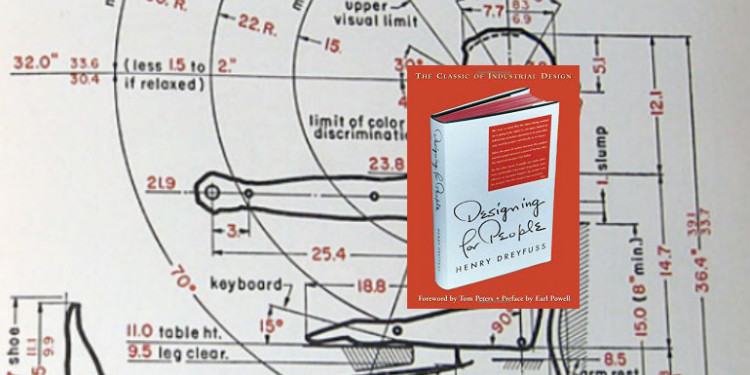
Designing for People by Henry Dreyfuss
Henry Dreyfuss designed telephones, war rooms, ship cabins, train interiors, magazines, bank vault doors, dental equipment, tractors, and radar systems. It’s unlikely that any contemporary designer has the opportunity to be involved in such a broad reach of projects. Dreyfuss always put himself in the shoes of the recipients of his designs. He slept in hotel rooms, traveled on airplanes and ships, and walked the aisles of department stores. He was able to bring the same design perspective to bear on such different problems by intense study of the problem domain and acute empathy for the end users of his products. Each design project was used within a different environment: from the battlefield, to the ocean, the farm, and the air. Dreyfuss’s contemporaries, Walter Dorwin Teague (automobiles, railway cars, logos), Norman Bel Geddes (Futurama, the case for the Mark I computer), and Raymond Loewy (Coke bottle, Saturn rocket, stamps, logos, razors) were all involved in a wide variety of design challenges. Like Dreyfuss, Bel Geddes designed theatrical sets. Most prominent designers of the time were engaged with interior design and wrote books suggesting broad societal and environmental design direction (communities, transportation features).
Dreyfuss was involved in some of the most ubiquitous technologies and tools of the 20th century. In the book, he recounts improvements made to rotary dial telephones–the numbers were moved outside the dial ring so that they would not be smudged by fingers and pencils when dialing. This change also eliminated the flickering effect of the finger holes moving over the numbers. The designers also had to grapple with the “receiver off hook problem” with handset phones–what to do when the receiver was not placed on the cradle correctly? The book chronicles each design challenge and highlights Dreyfuss’s curiosity, thoughtfulness, and design insights.
His career spanned a time when many new global technologies were gaining traction and beginning to change our lives: nuclear energy, space flight, commercial aviation, computers, telephones, and television. He was aware of the alienating potential of many technologies and the downside of the automation and mass production that was beginning to affect all aspects of people’s lives.
Design Principles
From the vast number of projects Dreyfuss and his company were involved with, a few themes emerge:
Direct Research – Dreyfuss placed a premium on using products and walking in the shoes of the consumer. Nothing can substitute for in person experience with the object or environment. The designer must learn about the problem domain and customers in the environment of use.
Modeling – Each of Dreyfuss’s design projects included a model, many at full scale. He gives many examples of building rooms and arranging interiors of ships, planes, and hotels. Many times the final design was dis-assembled, moved, and re-assembled for the client.
Judicious use of design – Many of his design challenges involved only minor changes to the object under study. He did not feel the need to reinvent every single object.
Design instinct – Born from years of study and experience, Dreyfuss maintains that good designers begin to understand what works in the market and what doesn’t. He believed a refined sense of design could be cultivated through extensive market research and observation.
The Five Point Formula
Dreyfuss distilled twenty-five years of industrial design experience into a five point formula for approaching any design problem:
Utility and Safety – Dreyfuss, who designed farm and manufacturing machinery along with weapons systems, placed top priority on the safety of the operator. Utility follows in a close second place–does the machine or tool easily do what it is intended to do?
Maintenance – Desiging for the maintenance activity is a critical consideration for machines or tools which must be cleaned, oiled, or which have parts that must be replaced on a regular basis after wear. Interior spaces that Dreyfuss and his team designed for airplanes and ships, posed larger maintenance considerations a which impacted the amount of staff required to clean and manage the rooms.
Cost – The industrial designer must keep an eye on both tools cost and production cost. Reducing the number of pieces which comprise the finished object is a key consideration.
Sales Appeal – Thinking beyond pure form, the designed product must “sell itself.” Dreyfuss was always cognizant of how an object would appear in a retail environment near its competitors.
Appearance – This is the pure design characteristic of the product. Does it evoke a pleasant emotion within its user?
Leisure time
Is [leisure time] making its recipients happier, better equipped to live a full life, to realize their full potential of personal development?
As a designer of time-saving objects and tools which change lives, Dreyfuss was aware of the increases in productivity these innovations provided. He speculated about the effect better technology would have on society and suggested that people spend their time reading and contemplating the fine arts. Surplus time was a clear benefit to him because it allows people to have space for activities outside hard labor and daily maintenance tasks. Ultimately, Drefuss hoped that increased free time will support contemplation and new ways of living based on insights enabled from decreased physical labor and unnecessary tasks.
Tranquility
By reducing objects to simple, unobtrusive forms, by relieving them of absurd and excessive decoration, by using appropriate colors and textures, and by avoiding obtrusive noises, we contribute to the serenity of those who use them.
Dreyfuss concludes the 1955 edition of the book with a chapter titled “Appraisal.” In it, he predicts what the year 2000 and beyond will be like. As any futurist, he makes some on-target predictions, such as telephones which have small television screens within them, but is wildly off the mark in other respects–we are not drilling for oil by slamming rockets into the earth. A life-long observer of human behavior, he notes that whatever changes in technology, humans will still have the same needs.
Considering the outcomes of industrial design, he says he always seeks tranquility, and that is something he believes can be created by good design. For Dreyfuss, serenity can come from many environments, a classical building, a modern skyscraper, or a forest. Tranquility is a noble goal for Dreyfuss.
Reappraisal
For the industrial designer, the job is already assigned; to fit the new machines and materials…to people.
The 1967 edition of the book contains Dreyfuss’s re-assessment of the future twenty two years after the first edition was published.
Dreyfuss would have been hard pressed to predict the impact of a global telecommunications system on all aspects of our lives. He was familiar with teleconferencing and lived through rapid changes in transportation, predicting that an ever increasing velocity of travel would bring about the need for a variety of treatments. Interestingly, the nature of personal transportation (cars, railroads, airplanes) has not changed much from Dreyfuss’s time. We do not use helicopters for short-range travel, nor do we have extensive undersea habitats, nor is supersonic flight widely used commercially. He was correct about self-driving cars but not about railroads, which he predicted would be widely used in the United States. He believed that mail might one day be delivered by rockets but did not consider that messages would be transmitted primarily electronically. One technology which has not advanced all is weather control, something Dreyfuss noted as a possibility. He does tackle the mounting garbage and waste problem and proposes more re-use and efficient disposal–a movement that has been slowly gaining momentum.
In a section on computers, he says that already in the 1960’s “no big business could operate efficiently without a computer.” This chapter was written two years before ARPANET connection was established between the Stanford Research Institute and UCLA. Although he includes the Picturephone in his list of leading technologies, the human communication aspect of computers was not yet evident.
Dreyfuss closes his first Appraisal chapter with this quote which guides his work:
Make no little plans; they have no magic to stir men’s blood and probably in themselves will not be realized. Make big plans; aim high in hopes and work, remember that a noble, logical diagram once recorded will never die, but long after we are gone will be a living thing, asserting itself with ever-growing intensity. Remember that our sons and grandsons are going to do things that would stagger us. Let your watchword be order and your beacon beauty. –Daniel Brunham

